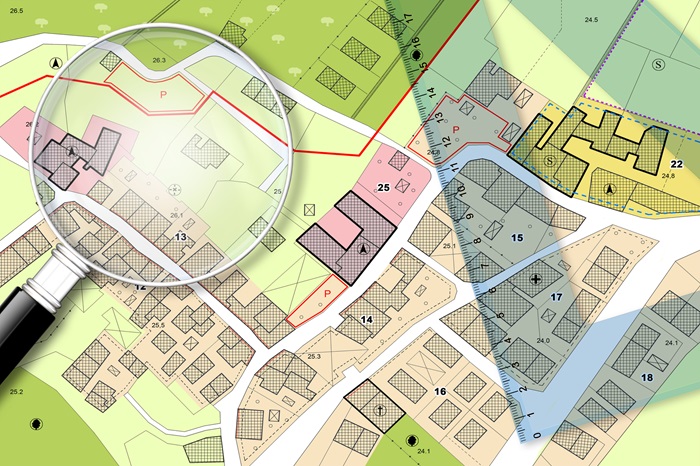Zoning Laws Exposed: Surprising Restrictions Cities Can Impose on You
Navigating the complex web of zoning laws can be a daunting task for property owners and developers. From restrictions on building heights to unexpected land-use limitations, there’s a myriad of ways in which zoning laws can shape your property development plans. We’re unraveling the mysteries of zoning ordinances and offer insights into effectively navigating these crucial, yet often overlooked, aspects of property ownership and development.

Minimum Livability Space
"Minimum Livability Space" refers to zoning and building codes that set the smallest allowable size for residential units. These standards, varying significantly between cities, are designed to ensure basic safety, comfort, and livability in housing by stipulating requirements for room dimensions, ceiling height, access to natural light, and ventilation.
Originating in the early 20th century to combat the overcrowded and unsanitary conditions of urban tenement housing, these regulations have evolved over time. The rise of the tiny house movement and the push for affordable urban housing have recently prompted some cities to reevaluate and potentially lower these minimum space standards.
Controversies often arise around these regulations. Developers sometimes argue that strict standards hinder affordable housing development, while tenant advocates fear that reduced standards could lead to poor living conditions. In response, innovative housing solutions like micro-apartments, typically 200 to 400 square feet, are being explored in various urban areas to balance affordability with livability.
In conclusion, minimum livability space standards are a crucial element in urban planning, embodying the ongoing challenge of balancing the need for affordable housing with maintaining adequate living conditions.
Chicago's Lakeshore Protection Ordinance
Chicago's Lakeshore Protection Ordinance, a hallmark of the city's urban planning, safeguards the iconic Lake Michigan shoreline from unchecked development and environmental degradation. Enacted to preserve the natural and recreational value of the lakeshore, this ordinance regulates land use, development, and natural resource management along the lakefront.
Historically, this legislation emerged from a growing concern over the potential overdevelopment of Chicago's prized lakefront, which is integral to the city's identity and a beloved public resource. It reflects a commitment to maintaining public access, protecting natural landscapes, and ensuring sustainable development along the 26 miles of the city's shoreline.
One notable aspect of the ordinance is its emphasis on maintaining the aesthetic and ecological integrity of the lakeshore. This includes restrictions on building heights, preservation of open spaces, and measures to protect natural habitats. The ordinance has occasionally sparked debates, especially when it intersects with large-scale development projects that seek waterfront locations.
Recent updates to the ordinance have focused on adapting to challenges posed by climate change and rising lake levels, ensuring the long-term resilience and sustainability of the lakeshore area. Chicago's Lakeshore Protection Ordinance serves as a model for balancing urban development with environmental stewardship and public access to natural resources.
Height Restrictions for Fences
Height restrictions for fences are common regulatory measures in urban planning, ensuring safety, privacy, and aesthetic harmony in neighborhoods. These regulations typically specify the maximum height allowed for fences in residential and commercial areas, often varying based on the fence's location on the property and its proximity to streets and neighboring properties.
While these restrictions are standard in many cities, their specifics can vary widely. For instance, in some areas, front yard fences are limited to a lower height than those in backyards to maintain street visibility and a sense of openness. In historic districts or areas with specific aesthetic guidelines, additional restrictions may apply to preserve the character of the neighborhood.
Historically, these regulations have evolved to balance individual property rights with community interests. Incidents where excessively high fences caused safety issues or neighbor disputes have often led to stricter enforcement or revisions of these rules.
Notably, height restrictions for fences have occasionally been the subject of legal challenges, leading to notable case laws in some jurisdictions. These cases typically revolve around issues of privacy, property rights, and local government authority. Height restrictions for fences, while seemingly mundane, play a critical role in shaping the visual and functional aspects of urban and suburban landscapes, reflecting a community's values and priorities.
Chicken-Keeping Regulations
Chicken-keeping regulations are specific municipal laws governing the raising of chickens in residential areas. While not unique to Chicago, the city's regulations are a notable example of urban livestock rules adapting to contemporary urban homesteading trends.
In Chicago, these regulations focus on maintaining public health and neighborhood harmony. They typically include limits on the number of chickens allowed, prohibitions against roosters to avoid noise issues, and requirements for proper housing and sanitation to prevent nuisances and health risks.
The history of urban chicken-keeping reflects a growing interest in sustainable living and local food production. Initially more common in rural areas, the trend has seen a resurgence in cities, prompting municipalities like Chicago to develop specific guidelines.
Incidents involving improper chicken-keeping, such as noise complaints or health concerns, have occasionally made headlines, underscoring the need for clear and enforceable regulations. Updates to these rules often aim to balance the benefits of urban agriculture with the need to maintain safe and pleasant residential communities.
Residential Density Limits
Residential density limits refer to zoning regulations that control the number of housing units or inhabitants per unit of land area. These limits are not unique to any single city but are a common feature in urban planning worldwide. They are designed to manage population density, ensuring adequate space, resources, and infrastructure for residents.
These regulations often stem from historical efforts to prevent overcrowding and improve living conditions. In the early 20th century, cities grappling with the consequences of rapid industrialization and urbanization introduced such limits to address public health and safety concerns.
The specifics of residential density limits can vary significantly. For instance, some cities might impose stricter limits in suburban areas to preserve a low-density, residential character, while allowing higher densities in urban centers to support more housing and public transit.
Noteworthy incidents involving density limits include debates over urban sprawl versus high-density living, with implications for environmental sustainability, housing affordability, and community development. Recent updates in some cities reflect a shift towards higher density limits to accommodate growing populations and promote more sustainable urban living patterns.
Pedestrian Streets (PS) Districts
Pedestrian Streets (PS) Districts are urban designations aimed at enhancing and preserving the walkability of city streets. While not unique to Chicago, the city's implementation of PS Districts is a prominent example of urban planning focused on pedestrian-friendly development.
In Chicago, PS Districts are characterized by their emphasis on foot traffic, with regulations that promote ease of pedestrian movement and discourage automobile dominance. This includes limiting the number and size of driveways, prioritizing street-level retail, and ensuring clear and accessible walkways.
The concept of PS Districts in Chicago and other cities originated from the desire to revitalize urban cores and encourage more sustainable, community-oriented environments. By reducing reliance on vehicles, these districts aim to create more engaging and vibrant street scenes, improve air quality, and increase safety for pedestrians.
PS Districts have sometimes sparked debates, particularly when changes affect traffic patterns or local businesses. However, they continue to be a key strategy in urban redevelopment, reflecting a shift towards more human-centric city planning.
Minimum Lot Size Restrictions
Minimum lot size restrictions are zoning regulations that set the smallest allowable size for land parcels on which buildings can be constructed. These rules are a standard feature in urban planning and are not unique to Chicago, though the city's application of these regulations reflects its specific urban development goals.
The purpose of minimum lot size restrictions is to control population density, maintain neighborhood character, and ensure adequate space for utilities and green areas. These limits can vary significantly depending on the area's zoning classification, ranging from smaller sizes in dense urban cores to larger sizes in suburban or rural areas.
Historically, these restrictions emerged as a response to rapid urbanization, aiming to prevent overcrowding and maintain a balanced urban environment. In some cities, debates have arisen around these restrictions, particularly regarding their impact on housing affordability and diversity. Recent trends show a move towards relaxing minimum lot size restrictions in some areas to encourage more diverse and affordable housing options, especially in response to growing urban populations and housing crises.
Coach Houses No Longer Banned in Chicago
The recent lifting of Chicago's long-standing ban on coach houses marks a significant shift in the city's housing policy. Coach houses, also known as accessory dwelling units (ADUs), are secondary housing units on a residential lot, either detached or attached to a garage. Historically, these units were common in Chicago, but a ban was implemented in 1957 to control urban density and maintain neighborhood character.
The reversal of this ban, effective from 2021, is a response to the city's affordable housing crisis. Allowing coach houses is seen as a way to increase housing options and density without drastically altering neighborhood aesthetics. This change has been welcomed by many as a means to provide more affordable housing solutions and utilize existing space more efficiently. This policy shift reflects a broader trend towards flexible and diverse urban housing solutions.
If you're intrigued by the dynamic landscape of urban zoning and property development, Millennium Properties is your go-to expert. Navigating the complexities of regulations like Chicago's Lakeshore Protection Ordinance or the new possibilities opened by the lifting of the coach house ban requires a deep understanding and expertise that our team proudly offers. Whether you're a property owner seeking to maximize your real estate's potential, or an investor looking for the next big opportunity, Millennium Properties has the insight and experience to guide you. Reach out to us today to explore how we can turn these zoning law intricacies into your strategic advantage.


